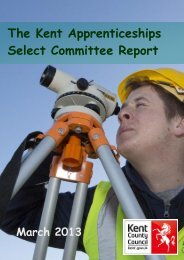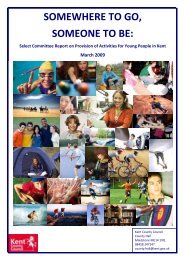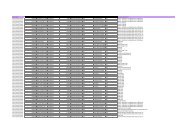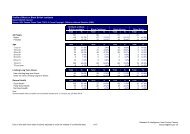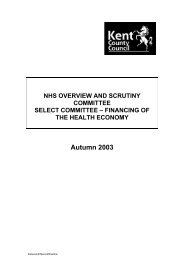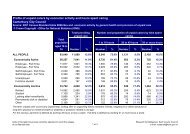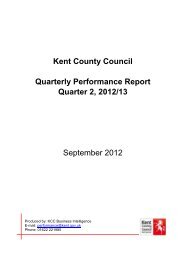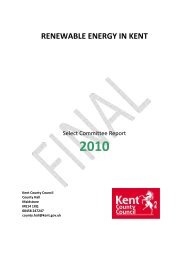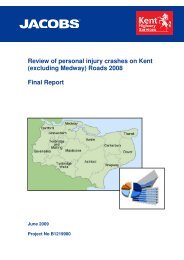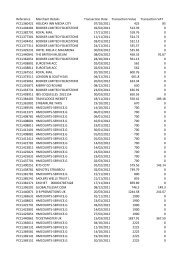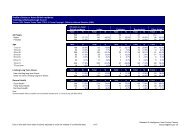The development of Local Healthwatch in Kent Part one: key findings
The development of Local Healthwatch in Kent Part one: key findings
The development of Local Healthwatch in Kent Part one: key findings
You also want an ePaper? Increase the reach of your titles
YUMPU automatically turns print PDFs into web optimized ePapers that Google loves.
All participants shared an aspiration for K LHW to be effective <strong>in</strong> the way<br />
it works with diverse groups <strong>in</strong> <strong>Kent</strong>. It was important that K LHW takes a<br />
proactive approach to identify<strong>in</strong>g groups it will engage, identify<strong>in</strong>g the barriers<br />
they face and develop<strong>in</strong>g concrete and specific strategies to overcome these.<br />
K LHW should be able to evidence how it works with seldom heard groups<br />
from across <strong>Kent</strong>.<br />
<strong>Part</strong> two <strong>of</strong> the report captures a wide range <strong>of</strong> different groups that have<br />
been proposed and champi<strong>one</strong>d by participants. A number <strong>of</strong> pr<strong>in</strong>ciples<br />
emerged <strong>in</strong> discussions about how to identify and prioritise these groups:<br />
• Data should be used from the Jo<strong>in</strong>t Strategic Needs Assessment and other<br />
sources<br />
• Data should be triangulated with <strong>in</strong>sight from local community and voluntary<br />
groups who have direct contact with groups<br />
• Individuals stories and experiences are essential to <strong>in</strong>form the engagement<br />
strategy<br />
• It is important to recognise that some groups may be located <strong>in</strong> small parts<br />
<strong>of</strong> <strong>Kent</strong> whilst others may be distributed across the county<br />
• Health <strong>in</strong>equality data should be l<strong>in</strong>ked to equality and diversity data<br />
• Where there are already exist<strong>in</strong>g networks for these groups across <strong>Kent</strong> K<br />
LHW should make strategic contact with the network coord<strong>in</strong>ators – for<br />
example <strong>in</strong> the case <strong>of</strong> learn<strong>in</strong>g disability and cancer networks<br />
• Different engagement strategies are needed with different groups<br />
<strong>Part</strong>icipants provided many <strong>in</strong>sights and local knowledge about diverse and<br />
seldom heard groups <strong>in</strong> <strong>Kent</strong>. Data <strong>in</strong> part two <strong>of</strong> the report provides a long<br />
list <strong>of</strong> groups but it is recognised that it is still not exhaustive and K LHW will<br />
need to be constantly question<strong>in</strong>g itself and challeng<strong>in</strong>g assumptions about<br />
diversity <strong>in</strong> <strong>Kent</strong>. <strong>The</strong> most frequently menti<strong>one</strong>d groups for K LHW to identify<br />
and engage were:<br />
• Children and young people<br />
• Older people liv<strong>in</strong>g <strong>in</strong> residential and nurs<strong>in</strong>g homes<br />
• Older people with dementia and their carers<br />
• Gypsy and Traveller community<br />
• Young people with mental health needs<br />
• People with learn<strong>in</strong>g disabilities<br />
• Rural populations<br />
22<br />
<strong>The</strong> <strong>development</strong> <strong>of</strong> <strong>Local</strong> <strong>Healthwatch</strong> <strong>in</strong> <strong>Kent</strong>: assess<strong>in</strong>g read<strong>in</strong>ess for <strong>Local</strong> <strong>Healthwatch</strong>



